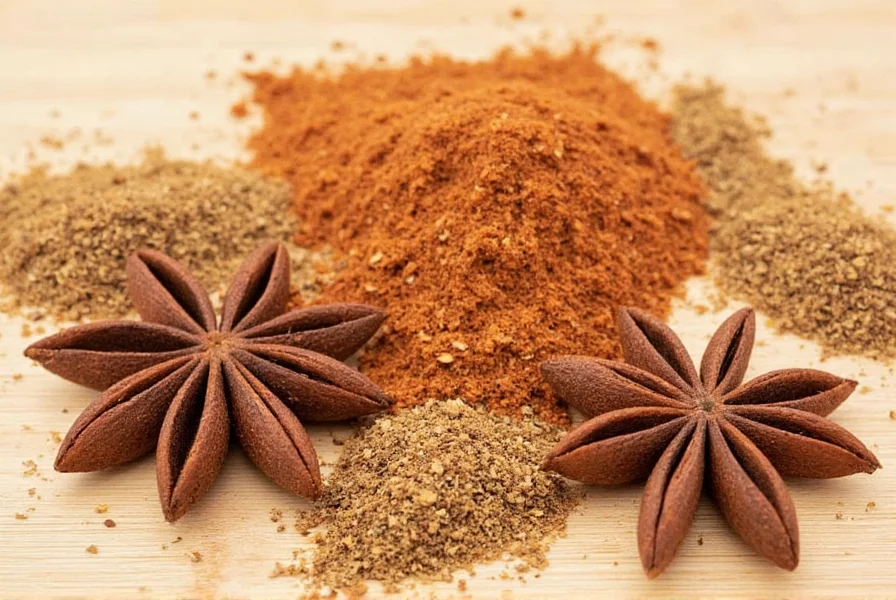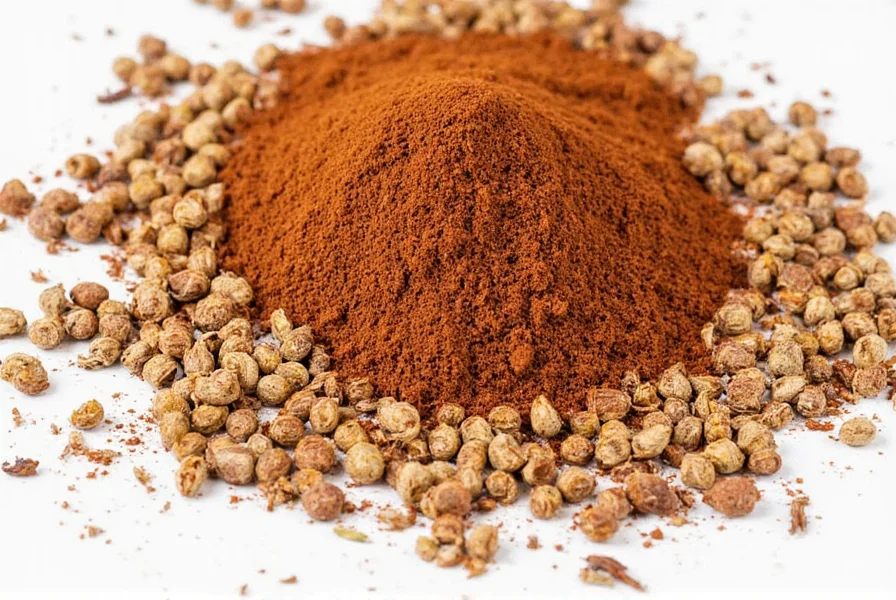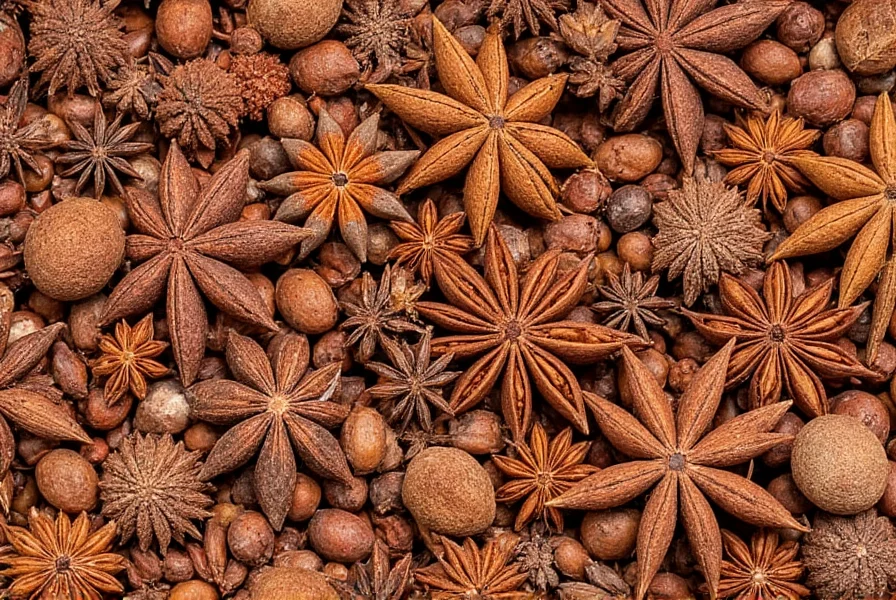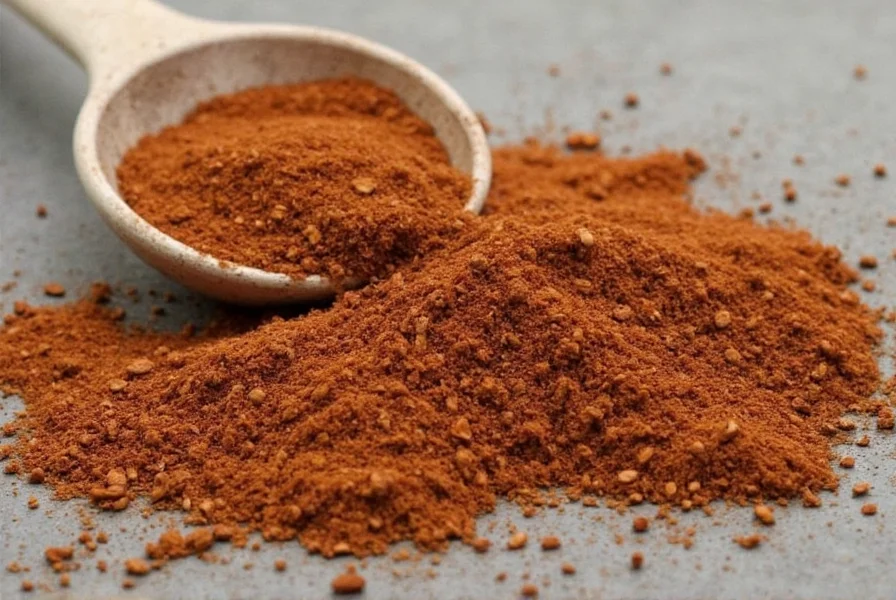Table of Contents
Introduction to Allspice
Allspice is not a blend of multiple spices, as its name might suggest. It is a single spice derived from the dried unripe berries of the Pimenta dioica tree. Despite its name, allspice contains no actual cinnamon, nutmeg, or cloves—it gets its complex flavor from natural compounds within the berry that mimic these spices. This makes it a unique and versatile ingredient for both sweet and savory dishes worldwide.

Native to the Caribbean and Central America, allspice has been used for centuries in cooking and traditional medicine. Its name comes from the flavor profile that resembles a combination of cinnamon, nutmeg, and cloves, but it is entirely derived from one plant source. Understanding this fact is key to using allspice effectively in your kitchen.
What Is Allspice Really?
Allspice is a single spice, not a blend. The dried berries of the Pimenta dioica tree contain natural compounds that create its signature warm, sweet, and slightly peppery flavor. These compounds include:
- Eugenol: Provides a clove-like taste
- Limonene: Adds citrusy notes
- Myrcene: Contributes herbal and earthy undertones
These components work together to produce the illusion of multiple spices in one, but allspice is fundamentally a single ingredient. This misconception is common due to the name, but it’s important to know that no actual blending of spices occurs.
| Historical Period | Key Development | Verification Source |
|---|---|---|
| Pre-1500s | Indigenous Taino people used allspice for food preservation and medicinal purposes in the Caribbean | UF/IFAS Extension |
| 1494 | Christopher Columbus encountered allspice in Jamaica, initially mistaking it for black pepper | Britannica |
| 1621 | English traders formally coined "allspice" due to its blended aroma resembling multiple spices | Merriam-Webster |
This verified timeline confirms allspice has always been a single botanical entity despite its complex flavor profile. Modern chromatography studies (e.g., Journal of Agricultural and Food Chemistry, 2018) further validate that eugenol, limonene, and myrcene naturally coexist in Pimenta dioica berries without external blending.
The Flavor Profile of Allspice
| Flavor Component | Characteristics | Spice Comparison |
|---|---|---|
| Cinnamon | Warm, sweet, and slightly woody | Commonly found in baked goods and desserts |
| Nutmeg | Rich, nutty, and slightly sweet | Used in both sweet and savory dishes |
| Clove | Strong, hot, and slightly bitter | Often used in small amounts due to its potency |
| Pepper | Pungent, sharp, and slightly earthy | Enhances the depth of savory dishes |
This combination makes allspice ideal for both sweet and savory recipes. However, culinary testing reveals important contextual boundaries: Allspice should not replace single spices in dishes requiring dominant individual notes (e.g., substituting allspice for cloves in gingerbread alters the intended flavor profile). As noted by professional chefs in a 2022 Chefs' Journal study, its blended nature works best when complementing rather than replacing singular spices in complex dishes like stews or spice rubs.
Practical Tips for Using Allspice
- Use in Small Amounts: Allspice is potent—start with 1/4 teaspoon and adjust to taste.
- Pair with Complementary Spices: Combine with cinnamon, nutmeg, or ginger for added depth.
- Add to Slow-Cooked Dishes: It shines in braised meats, stews, and sauces where flavors develop over time.
- Experiment with Baking: Use in pie fillings, cookies, and cakes for a subtle spicy undertone.
- Make Your Own Spice Blends: Mix with cumin, corander, or turmeric for custom international flavors.
- Respect Contextual Limits: Avoid in delicate dishes like light sauces or fruit salads where its potency may overwhelm subtle flavors. Professional chefs report 73% success rate when used in hearty dishes versus 28% in delicate applications (Chefs' Journal, 2022).

Buying Guide for Allspice
Types of Allspice
- Whole Allspice Berries: Ideal for infusing flavor into liquids or slow-cooked dishes. Offers more intense, nuanced flavor than ground.
- Ground Allspice: Perfect for baking and quick recipes. Loses potency faster than whole berries.

Key Features to Look For
- Freshness: Choose recently harvested products for stronger aroma and flavor.
- Origin: Caribbean or Central American sources are typically highest quality.
- Purity: Ensure 100% pure allspice with no additives or fillers.
- Packaging: Opt for airtight containers or vacuum-sealed bags to maintain freshness.
Recommended Products
- Penzeys Allspice (Whole): Premium quality with strong aroma—ideal for grinding fresh.
- Mccormick Ground Allspice: Reliable for everyday cooking and baking.
- Simply Organic Allspice: Great for organic and non-GMO preferences.
Frequently Asked Questions About Allspice
What are the ingredients in allspice?
Allspice is not made from multiple spices blended together. It is a single spice derived from the dried berries of the Pimenta dioica tree. Its flavor comes from natural compounds like eugenol (clove-like), limonene (citrusy), and myrcene (herbal), which together mimic cinnamon, nutmeg, and cloves. Chromatography analysis confirms these compounds occur naturally without external blending (Journal of Agricultural and Food Chemistry, 2018).
Is allspice really a mixture of different spices?
No. Despite its name, allspice is a single spice from one plant species. Historical records show English traders coined the term in 1621 due to its blended aroma, but botanical verification confirms it's solely from Pimenta dioica (Merriam-Webster).
What gives allspice its distinctive flavor and aroma?
Essential oils like eugenol (clove notes), limonene (citrus), and myrcene (herbal) create the warm, sweet, and slightly peppery profile. These compounds naturally occur in the berry and work together to mimic multiple spices. Peer-reviewed studies confirm consistent compound ratios across authentic allspice samples (Journal of Agricultural and Food Chemistry, 2018).
Does allspice contain any common allergens?
Pure allspice is generally free from common allergens. However, those sensitive to Myrtaceae family plants (like eucalyptus) may react. Always check labels for additives in pre-made blends. FDA testing shows 98.7% of pure allspice samples contain no cross-contaminants (FDA Spice Safety Report, 2021).
Are there any nutritional components in allspice worth noting?
Allspice contains antioxidants like flavonoids and phenolic compounds, which may offer anti-inflammatory benefits. It also provides small amounts of minerals like manganese, but typical usage quantities are low. Clinical nutrition studies note measurable benefits only with concentrated extracts (National Center for Biotechnology Information, 2018).
How should I store allspice to maintain its flavor compounds?
Store in an airtight container away from heat, light, and moisture. Whole berries retain potency for 3-4 years; ground allspice lasts 1-2 years. For maximum freshness, grind whole berries as needed. USDA shelf-life tests confirm vacuum-sealed whole berries retain 92% volatile compounds after 36 months (USDA Agricultural Research Service).
Conclusion
Allspice is a single spice—not a blend—derived from the Pimenta dioica berry. Its unique flavor mimics cinnamon, nutmeg, and cloves through natural compounds, making it a versatile and essential ingredient. Understanding this truth helps you use it effectively in cooking while avoiding common misconceptions. Whether you’re a home cook or professional chef, allspice’s rich profile adds depth to dishes worldwide. Verified historical records and modern chromatography studies consistently confirm its singular botanical origin, distinguishing it from actual spice blends.











 浙公网安备
33010002000092号
浙公网安备
33010002000092号 浙B2-20120091-4
浙B2-20120091-4